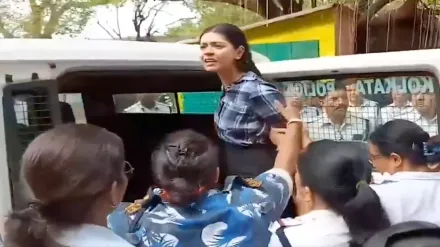The arrest of Sharmistha Panoli, a 22-year-old law student and social media influencer, has ignited a debate in India concerning the limits of free speech, religious and communal sensitivity and the role of the state in controlling online expression and speech. The 22-year-old was arrested in light of her remarks on her social media handle (on Instagram) regarding the Pahalgam attack and condemning celebrities for their passive stance on Operation Sindoor. The video of said remarks led to multiple FIRs being filed against her. Despite her deleting the video and issuing an unconditional apology, she was arrested by the Kolkata police in Gurugram and remanded to 14 days of judicial custody under:
Section 196(1)(a) of BNS: Promoting enmity between groups based on religion
Section 299 of BNS: Deliberate acts intended to outrage religious feelings
Section 352 of BNS: Intentional insult likely to provoke a breach of peace
Section 353(1)(c) of BNS: Statements inciting public mischief
The Kolkata police claimed they acted lawfully against the 22-year-old woman as she had been sharing offensive content that promoted communal hatred and further insulted the religious belief of a class of citizens of India and amounted to promoting disharmony between different communities, and hate speech and abusive language should not be misconstrued as freedom of speech and expression as enshrined in Article 19(1)(a) of the Constitution. The arrest has drawn criticism from various sectors. Bar Council of India Chairman Manan Kumar Mishra condemned the actions of the Kolkata police and demanded the immediate release of the influencer in accordance with her right to free speech and expression. India’s constitution guarantees freedom of speech and expression under article 19(1)(a), but this right is subject to reasonable restrictions under article 19(2). This case questions the balance between the right to freedom of speech and curbing hate speech that might incite violence.
As a student of law and a concerned, engaged citizen, I believe that the Kolkata Police may have had valid legal grounds to justify the arrest, particularly under provisions that deal with promoting enmity or hatred between different religious or social groups. In a country as diverse and sensitive as India, speech that has the potential to incite communal tension cannot be taken lightly. If the individual’s remarks indeed crossed the legal threshold into hate speech then it is not only within the rights of the state to intervene, but it becomes a constitutional duty to prevent any escalation into public disorder or violence. The law exists to act as a safeguard against provocations that could disrupt public peace and harmony.
However, any action taken by the state must also be proportionate and just. In this instance, it is important to consider mitigating circumstances. The allegedly objectionable video was promptly taken down, and she issued an immediate and unconditional apology. These steps reflect an acknowledgement of the gravity of the situation and a willingness to take responsibility. In such scenarios, where no actual violence has occurred and remorse is evident, the principle of proportionality should guide law enforcement responses. The arrest and subsequent judicial remand, when weighed against these mitigating actions, appear harsh and arguably excessive, raising questions about consistency in the application of the law.
Furthermore, selective enforcement or an overzealous response can set a problematic precedent, potentially stifling legitimate expressions of dissent or criticism in a democratic society. The law must be applied evenly and without bias, irrespective of who the person is or which ideology they represent. At the same time, democracy thrives not by avoiding uncomfortable conversations but by engaging with them openly. This case presents an important opportunity for public discourse on the boundaries between free speech and hate speech, and how the state should respond to speech that straddles the line. It is through such debates that we deepen our understanding of justice, fairness, and the principles enshrined in our Constitution. There is, as yet, no judicial finding on the matter. Until the courts render a decision, the presumption of innocence must prevail. Nonetheless, the broader legal, social, and political conversations this case has sparked are not only necessary but vital to the health of our democracy and to the continued evolution of our jurisprudence on freedom of expression and communal harmony.
In conclusion, the case serves as a powerful reminder that freedom of speech is not merely a legal entitlement enshrined in our Constitution, but also an essential human means of communication—one that allows for the articulation of thoughts, dissent, criticism, and diverse viewpoints in a pluralistic society. It is through this freedom that democracies thrive, evolve, and stay accountable. However, this right is not absolute. It comes with responsibilities and limitations, especially when speech crosses the line into incitement of violence, hate speech, or threats to communal harmony and public order. In such instances, it is not only lawful but necessary for the state to intervene.
That said, any curtailment of speech must be proportionate, transparent, and guided by constitutional principles—not arbitrary power. Overreach can set a dangerous precedent, chilling legitimate expression and weakening the very fabric of democratic dialogue. As a society, our challenge lies in building robust institutions that not only guard against hate and harm but also safeguard dissent and diversity of thought.
If we can find and sustain the delicate balance between accountability and empathy, between the enforcement of law and the preservation of liberty, we do more than just uphold the text of the Constitution—we honour its spirit. In doing so, we cultivate a more inclusive, just, and open public space where differences are not feared but engaged with, and where freedom truly becomes a shared and protected value.
Contributed by: Tulip (Intern)

